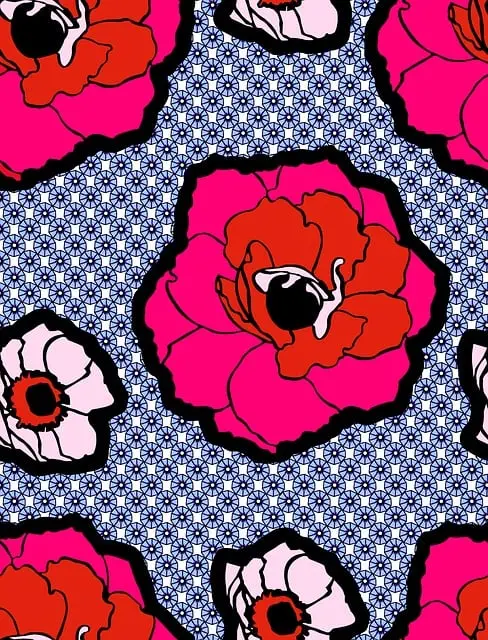Vietnamese Kratom leaves, specifically the Mitragyna speciosa variety, are distinguished by their unique alkaloid composition and thrive in Vietnam's fertile environments. The 'toss and wash' method, where users ingest crushed Kratom leaves by placing them in their mouth and swallowing with a beverage, is an effective way to experience the potent effects of Mitragynine and 7-Hydroxymitragynine, the key alkaloids. This traditional consumption technique ensures efficient uptake and is favored for its simplicity and efficacy. Vietnamese Kratom strains are recognized for their varied effects, including stimulation, analgesia, and mood enhancement, depending on the specific strain and dosage. The article emphasizes sustainable agricultural practices by Vietnamese farmers that maintain a consistent potency across batches. It also notes the importance of ethical and sustainable production methods from forest to final product. Additionally, the article advises users to practice responsible consumption due to the dual effects of Kratom as both a stimulant and an opioid-like substance, with a caution to consult healthcare professionals before use. Legal considerations are also highlighted, as Kratom's status varies by jurisdiction. The article concludes by advocating for precise dosing, understanding personal health conditions, sourcing from reputable vendors, and monitoring individual responses to ensure safe and respectful use of Vietnamese Kratom leaves.
Exploring the unique properties of Vietnamese Kratom leaves, this article delves into the potency, harvesting methods, and consumption techniques of this intriguing botanical. From the verdant forests of Vietnam to the user-friendly ‘toss and wash’ approach for ingestion, we uncover the nuances of kratom strains, including the rare Mitragyna Hypothetica. As with any substance, responsible use is paramount, and this piece aims to provide a comprehensive guide while highlighting safety considerations for enthusiasts. Join us on this enlightening journey into the world of Vietnamese Kratom leaves.
- Unraveling the Potency of Vietnamese Kratom Leaves: A Closer Look
- The Harvesting Process: From Vietnam's Wild Forests to Crushed Leaf Kratom
- The Toss and Wash Method: A User-Friendly Guide to Consuming Crushed Leaf Kratom
- Understanding the Different Strains of Vietnam Kratom Leaves
- Mitragyna Hypothetica: The Unique Species of Kratom from Vietnam
- Safety Considerations and Responsible Use of Vietnamese Kratom Leaves
Unraveling the Potency of Vietnamese Kratom Leaves: A Closer Look

Vietnamese Kratom leaves, sourced from the verdant landscapes of Vietnam, have garnered attention within botanical circles for their distinct alkaloid profiles and potent effects. The Mitragyna speciosa trees in Vietnam’s rich soil and favorable climatic conditions produce leaves that are revered by enthusiasts for their efficacy. These leaves contain a unique blend of alkaloids, which, when subject to the traditional ‘toss and wash’ method of consumption, release their active compounds into the system effectively. This method involves taking crushed Kratom leaves, tossing them into the mouth, and then washing them down with a beverage, often water. The alkaloids present in Vietnamese Kratom, such as Mitragynine and 7-Hydroxymitragynine, are particularly potent, offering a range of effects that include stimulation, analgesia, and mood enhancement, depending on the strain and dosage. Users report nuanced experiences with Vietnamese Kratom, noting its ability to provide sustained energy or deep relaxation, making it a versatile choice for those seeking natural alternatives for well-being. The consistency in potency across batches of Vietnamese Kratom leaves is often attributed to the careful cultivation and harvesting practices employed by local farmers, ensuring that each ‘toss and wash’ experience with this crushed leaf form can be both reliable and potent.
The Harvesting Process: From Vietnam's Wild Forests to Crushed Leaf Kratom

In the lush, verdant forests of Vietnam, the Kratom tree thrives amidst the natural biodiversity. The harvesting process of Vietnam’s Kratom leaves is a testament to the meticulous care and traditional techniques that have been passed down through generations. The leaves are carefully selected for their potency and quality. Workers, often with a deep understanding of the plant’s ecosystem, hand-pick the mature leaves from the trees, ensuring minimal damage to the environment. Once collected, the leaves undergo an initial drying process in the sunlight, a crucial step that preserves their alkaloid content. Afterward, the leaves are further dried indoors, where they are closely monitored to prevent over-drying, which could compromise their efficacy. The final product is then subjected to a ‘toss and wash’ method, where crushed leaf Kratom is mixed with a liquid and gently tossed back and forth before being ingested. This process enhances the bioavailability of the active compounds within the Kratom leaves, making it a preferred choice for consumers seeking the beneficial effects of this unique herb. The entire process from forest to final product emphasizes the importance of sustainability and purity in the production of high-quality Kratom.
The Toss and Wash Method: A User-Friendly Guide to Consuming Crushed Leaf Kratom

The “Toss and Wash” method is a straightforward technique for consuming crushed leaf kratom, offering a user-friendly experience for those seeking the effects of this natural substance. This approach eliminates the need for additional ingredients or paraphernalia, making it a convenient option for users on the go. To partake in this method, simply take the desired amount of crushed kratom leaf and toss it into your mouth. Following this, wash it down with a beverage of your choice, typically water or juice, to ensure all the kratom powder is ingested. The liquid helps to facilitate the powder’s movement through your mouth and into your throat, minimizing the chance of wasting any of the product. It’s recommended to consume the beverage quickly after tossing the kratom to prevent it from clumping or sticking to surfaces in your mouth. This method is efficient and effective, allowing users to experience the potential benefits of kratom with minimal preparation or cleanup required, making it a popular choice among many consumers. As with any consumption method, it’s crucial to be aware of the dosage and understand the effects, as kratom has both stimulant and opioid-like properties and should be used responsibly.
Understanding the Different Strains of Vietnam Kratom Leaves

Vietnamese Kratom leaves, a member of the Mitragyna speciosa family, exhibit a diversity of strains, each with its unique alkaloid profile and effects. The different strains are categorized primarily based on the color of their veins and the region from which they originate. Among the most recognized strains are the Red Vein, White Vein, and Green Vein Kratom leaves, all hailing from Vietnam’s fertile landscapes.
For those familiar with the kratom experience, the toss and wash method is a common technique to ingest crushed leaf kratom. This approach involves ‘tossing’ the powder into one’s mouth and then ‘washing’ it down with a liquid, typically water. The Vietnam Kratom strains are particularly amenable to this method due to their finely ground texture which makes them easier to swallow without compromising on potency. Users often report that the effects of Vietnamese Kratom strains can be quite profound, offering both stimulating and calming sensations depending on the dose and specific strain used. Whether seeking energy and focus from the White Vein or relaxation and pain relief from the Red Vein, users can appreciate the nuanced experiences that each strain provides.
Mitragyna Hypothetica: The Unique Species of Kratom from Vietnam

Mitragyna Hypothetica, a unique species of Kratom native to Vietnam, is distinguished by its distinct alkaloid profile and potential effects. This particular strain is less commonly encountered in global markets compared to its more prevalent cousin, Mitragyna speciosa, which is widely recognized for its leaves used in the traditional toss and wash method. The Hypothetica species grows naturally in the dense Vietnamese forests, where the combination of soil composition, climate, and altitude endows it with a unique set of characteristics. When prepared using the toss and wash technique, crushed leaves of Mitragyna Hypothetica are typically administered orally; this involves placing the leaf material in the mouth and then washing it down with liquids, allowing for efficient absorption and onset of effects. The alkaloids present in these leaves, such as 7-hydroxymitragynine and mitraphylline, are believed to offer a range of effects that may differ from those associated with M. speciosa, potentially providing a different experience for users who seek the unique properties this strain has to offer. The toss and wash method is a popular choice among enthusiasts as it enables precise dosing and rapid impact, making it a preferred consumption technique for many.
Safety Considerations and Responsible Use of Vietnamese Kratom Leaves

When incorporating Vietnamese Kratom leaves into one’s wellness routine, it is imperative to approach their use with due diligence and awareness of safety considerations. The traditional method of consuming crushed leaf Kratom, known as the ‘toss and wash’ technique, involves tossing a measured dose of the herb into one’s mouth, followed by washing it down with a liquid, typically water. This method should be executed with precision to ensure an accurate dosage. It is crucial to start with a low dose to gauge individual sensitivity, as Kratom’s effects can vary significantly from person to person. Users must also stay informed about the legal status of Kratom in their jurisdiction, as it remains a controlled substance in several countries and regions.
Responsible use of Vietnamese Kratom leaves extends beyond dosage; it encompasses a comprehensive understanding of one’s health conditions and interactions with other substances. Users should consult with healthcare professionals before integrating Kratom into their regimen, particularly if they are taking prescribed medications or have pre-existing health concerns. Monitoring the effects and maintaining awareness of one’s physical response is key to safe consumption. Additionally, it is advisable to source Kratom from reputable vendors who provide transparent information about the origin and purity of their product. By adhering to these guidelines and practicing cautious consumption, individuals can engage with Vietnamese Kratom leaves in a manner that respects both their well-being and the integrity of the herb’s traditional use.
In conclusion, the unique properties of Vietnamese Kratom leaves have garnered significant attention within herbal supplement circles. Through an in-depth exploration of their potency, harvesting process, and the different strains available, we’ve uncovered a wealth of information on this intriguing plant. The ‘toss and wash’ method emerges as a straightforward and accessible way to ingest crushed leaf Kratom, making it a popular choice among users. However, it is imperative to approach its use with caution, adhering to safety considerations and responsible consumption practices. As with any natural remedy, understanding the nuances of Vietnamese Kratom leaves is key to harnessing their full potential responsibly.






